
Discover 15 Unique Rum Cocktails for Your Next Party
Key Highlights
- Discover 15 unique rum cocktail recipes that move beyond the basics.
- Explore new and exciting unique flavors to impress your party guests.
- Learn how to make everything from refreshing tropical cocktails to cozy winter warmers.
- Find the perfect party drinks that are easy to prepare for a crowd.
- Get tips on choosing the right rum and using simple ingredients like pineapple juice and lime juice.
- Master easy mixing techniques to create delicious drinks at home.
Introduction
Are you ready to shake up your cocktail routine? Rum is an incredibly versatile spirit that’s perfect for more than just a simple rum and coke. From a refreshing classic cocktail to exciting tropical rum drinks, the possibilities are endless. This guide will introduce you to a world of unique rum cocktail recipes that are easy to make and guaranteed to be a hit. Get ready to discover your new favorite drink and become the go-to bartender among your friends.
15 Unique Rum Cocktails to Impress at Your Next Party

Tired of serving the same old party drinks? It’s time to explore the amazing variety of rum drinks you can create. This list features some of the best rum cocktails, blending classic rum cocktails with creative twists to introduce you to new and exciting flavors.
Whether you’re hosting a summer barbecue or a cozy winter gathering, there’s a perfect recipe here for you. We’ve compiled 15 unique cocktails that are simple enough for beginners but impressive enough for any occasion. Let’s find your next signature drink.
1. Pineapple Ginger Mojito
If you’re looking for a light and refreshing rum cocktail, this Pineapple Ginger Mojito is a perfect choice. It’s a vibrant twist on the classic Mojito, adding a tropical and spicy kick that is both surprising and delicious. The combination of sweet pineapple juice and zesty ginger creates a beautifully balanced drink.
This is one of those rum cocktail recipes that’s ideal for warm weather. The key is using fresh ingredients to let the flavors shine. Muddle fresh mint with simple syrup, then add the rum and juices.
To make this delightful drink, you’ll need:
- White rum
- Fresh pineapple juice
- A splash of ginger beer or ginger syrup
- Fresh lime juice and mint leaves
2. Blackberry Sage Rum Smash
For a more creative use of rum, try the Blackberry Sage Rum Smash. This cocktail combines the rich, deep notes of dark rum with the sweetness of blackberries and the earthy aroma of fresh sage. It’s a sophisticated and flavorful drink that proves rum cocktails can be much more than just sweet and fruity.
This recipe is a fantastic way to experiment with herbs in your drinks. Gently muddling the sage releases its essential oils, which pair wonderfully with the dark rum and tart blackberry juice. It’s a unique take on a classic cocktail smash that feels both rustic and elegant.
Here’s what you’ll need to create this smash:
- Dark rum
- Muddled fresh blackberries or blackberry juice
- Fresh sage leaves and a squeeze of lemon
3. Spiced Apple Rum Fizz
Are you searching for a seasonal rum cocktail perfect for autumn or winter? Look no further than the Spiced Apple Rum Fizz. This cozy rum drink combines the warmth of spiced rum with crisp apple juice and a bubbly finish. It’s like fall in a glass and is incredibly easy to whip up for any occasion.
The magic of this drink comes from the spiced rum, which brings notes of cinnamon, vanilla, and clove. When mixed with apple juice and topped with soda water or ginger beer for an extra kick, it creates a comforting and festive beverage.
To craft this fizz, simply combine:
- Spiced rum
- Apple juice or cider
- A top-off of soda water or ginger beer
4. Coconut Water Rum Cooler
If you need easy rum cocktail recipes, the Coconut Water Rum Cooler is as simple as it gets. This is one of the most hydrating and refreshing rum drinks you can make, perfect for a hot day or a large gathering. The natural sweetness of coconut water pairs beautifully with the clean taste of white rum.
This is one of the best white rum cocktails for beginners because it requires minimal ingredients and no special techniques. You can easily scale this recipe up in a punch bowl for a party, allowing guests to serve themselves. Just mix, chill, and enjoy.
For this simple cooler, you only need:
- White rum
- Coconut water
- A lime wedge for garnish
5. Hibiscus Rum Punch
This list is a great place to start your search for different rum cocktail recipes, and the Hibiscus Rum Punch is a standout. This visually stunning drink offers a floral and tangy twist on a traditional rum punch. The hibiscus syrup gives it a beautiful ruby color and a unique, slightly tart flavor that makes it memorable.
As one of the most elegant tropical cocktails, it’s perfect for brunches, bridal showers, or any event where you want to impress. It balances the familiar components of classic rum cocktails, like rum and lime juice, with the exotic taste of hibiscus.
To mix this beautiful punch, you’ll need:
- Light or golden rum
- Hibiscus syrup
- Fresh lime juice and orange juice
6. Mango Chili Daiquiri
Everyone should know how to make a classic daiquiri, but this Mango Chili Daiquiri takes it to another level. This cocktail adds a sweet and spicy twist to the original recipe, blending ripe mango with a hint of chili for a surprising kick. It’s a bold and exciting drink that will awaken your taste buds.
The base of this drink remains the simple, elegant formula of a classic daiquiri: rum, citrus, and sweetener. Here, pureed mango provides the sweetness, while a touch of chili introduces a layer of heat that contrasts beautifully with the fruit. You could even add a splash of passion fruit for more tropical notes.
For this fiery and fruity daiquiri, you will need:
- White rum
- Fresh mango puree
- A dash of chili powder or chili-infused syrup
- Lime juice
7. Rosemary Lemon Rum Spritz
Wondering what you need for a basic rum cocktail? This Rosemary Lemon Rum Spritz shows how simple ingredients can create something spectacular. This drink is an aromatic and refreshing option that combines the herbal notes of rosemary with tangy lemon juice and the smooth character of golden rum.
This spritz is one of those rum cocktail recipes that feels effortlessly sophisticated. The rosemary-infused simple syrup is easy to make and adds a fragrant complexity that elevates the drink. Topped with soda water, it’s a light and bubbly cocktail perfect for sipping on a sunny afternoon.
Your basic ingredients for this spritz include:
- Golden rum
- Fresh lemon juice
- Rosemary simple syrup
- Soda water
8. Blood Orange Rum Sour
Making a simple rum mixed drink at home is easy with a classic sour formula, and this Blood Orange Rum Sour is a stunning example. This cocktail is as beautiful as it is delicious, with the deep crimson color of blood orange juice creating a dramatic look. It offers a perfect balance of sweet and tart flavors.
Among the many rum cocktails, sours are a fundamental category. You simply combine a spirit, a sour element, and a sweet element. Here, the blood orange juice provides both sweetness and acidity, supported by fresh lime juice and a touch of simple syrup. For a different twist, you could even substitute grapefruit juice.
To make this simple sour at home, shake together:
- Aged or golden rum
- Fresh blood orange juice
- A little fresh lime juice and simple syrup
9. Passionfruit Tiki Twist
Escape to a tropical paradise with the Passionfruit Tiki Twist. This cocktail is bursting with exotic tropical flavors, led by the unmistakable sweet and tart taste of passion fruit. It’s a vibrant and juicy drink that embodies the fun and escapism of tiki culture. While perfect for summer, its bright taste can bring sunshine to any season.
This drink is a fantastic introduction to tiki-style cocktails, which often feature multiple rums and fruit juices. This simplified version uses white rum as a clean base, allowing the passion fruit syrup to be the star. A splash of triple sec adds a subtle orange complexity.
To create this tiki delight, you will need:
- White rum
- Passion fruit syrup or puree
- Lime juice
- A splash of triple sec
10. Cinnamon Maple Dark & Stormy
The Dark & Stormy is a classic rum cocktail everyone should know, and this version adds a cozy, seasonal twist. The Cinnamon Maple Dark & Stormy enhances the original with the warming spice of cinnamon and the rich sweetness of maple syrup. It’s the perfect drink for a cool evening.
This variation maintains the iconic combination of dark rum and spicy ginger beer but adds layers of complexity. The maple syrup complements the brown sugar notes of the dark rum, while a touch of cinnamon makes it feel extra comforting. A squeeze of lime juice is still essential to cut through the sweetness.
To make this autumnal version, you’ll need:
- Dark rum
- Spicy ginger beer
- Maple syrup and a pinch of cinnamon
- Lime juice
11. Strawberry Basil Cuba Libre
For another easy recipe ideal for beginners, try this Strawberry Basil Cuba Libre. It’s a fresh, summery take on the classic Cuba Libre, which is essentially a rum and coke with lime. This version introduces muddled strawberries and basil for a fruity and herbaceous twist that’s incredibly refreshing.
Unlike a blended strawberry daiquiri, this drink is built right in the glass. The sweet strawberries and aromatic basil are a delightful surprise against the familiar backdrop of rum and cola. Using a golden rum adds a bit more character than white rum without overpowering the fresh ingredients.
To build this easy cocktail, you will need:
- Golden rum
- Muddled fresh strawberries and basil leaves
- Cola and a lime wedge
12. Toasted Pecan Rum Old Fashioned
Here’s a truly creative way to use rum: the Toasted Pecan Rum Old Fashioned. This cocktail swaps whiskey for a quality aged rum, creating a smoother, slightly sweeter take on the timeless classic. The addition of a toasted pecan-infused syrup introduces a nutty, rich complexity that is perfect for slow sipping.
A Rum Old Fashioned is a fantastic way to appreciate the nuances of a good aged rum. The process is the same as the original: muddle sugar with bitters, add the spirit, and stir with ice. This version, served in a rocks glass with a large ice cube, is sophisticated and deeply flavorful.
To create this inventive drink, you’ll need:
- Aged rum
- Toasted pecan simple syrup
- Angostura bitters and orange bitters
13. Blueberry Lavender Rum Collins
For another light and refreshing cocktail suggestion, the Blueberry Lavender Rum Collins is a winner. This elegant drink is a floral and fruity twist on the classic Tom Collins. The combination of sweet blueberries and calming lavender creates a unique flavor profile that is both sophisticated and easy to drink.
Served in a tall highball glass, this drink is as beautiful as it is tasty. The light rum provides a neutral canvas for the blueberry juice and lavender syrup to shine. A splash of lemon juice adds brightness, and club soda gives it a crisp, bubbly finish.
To mix this lovely Collins, you’ll need:
- Light rum
- Blueberry juice or muddled blueberries
- Lavender syrup
- Lemon juice and soda water
14. Grapefruit Mint Rum Refresher
The ingredients for a basic rum cocktail can be as simple as rum, juice, and a fresh herb. The Grapefruit Mint Rum Refresher is a perfect example, combining sharp grapefruit juice with cooling mint and clean white rum. This drink proves that rum pairs exceptionally well with tart citrus flavors.
This cocktail is wonderfully straightforward and belongs in any lineup of simple tropical cocktails. You just shake the ingredients with ice and strain into a glass. The mint adds a fresh aroma and taste that cuts through the bitterness of the grapefruit, resulting in a perfectly balanced and invigorating drink.
Here are the basic ingredients you will need:
- White rum
- Fresh grapefruit juice
- Fresh mint leaves and a little simple syrup
15. Winter Spiced Hot Buttered Rum
When winter arrives, nothing beats a Hot Buttered Rum. This seasonal cocktail is the ultimate cozy drink, perfect for sipping by the fire. This version uses spiced rum and a rich batter made with butter, brown sugar, and warming spices like cinnamon and nutmeg. It’s like a hug in a mug.
This historic drink has many variations, but the core flavors of the season always shine through. Some recipes use rich coconut cream for a dairy-free option, which adds a wonderful tropical note. It’s a fantastic alternative to a Thanksgiving rum punch for a festive, warming treat.
To make this winter classic, you’ll need:
- Spiced or dark rum
- A pat of spiced butter batter
- Hot water to top
Essential Tips for Making Rum Cocktails at Home

Making the perfect cocktail at home is easier than you think. The key ingredient is, of course, the rum, but understanding the different types of rum and what each one pairs with is crucial. Remember to enjoy responsibly and ensure everyone is of the legal drinking age.
With a few basic ingredients and simple techniques, you can craft delicious rum drinks that rival those from your favorite bar. The following tips will guide you on choosing the right rum, stocking your bar cart, and mastering easy mixing methods.
Choosing the Right Type of Rum for Your Drink
Choosing the right rum can make all the difference in your cocktail. Different types of rum have distinct flavor profiles that suit different drinks. For parties, having a bottle of white rum and dark rum will cover most of your bases, from light and citrusy drinks to rich and spicy ones.
White or light rum is clear and has a mild flavor, making it a versatile choice for cocktails where you want other ingredients to shine, like in a Mojito or Daiquiri. Golden and aged rum have more complexity from time spent in barrels, with notes of vanilla and caramel that work well in drinks like a Rum Old Fashioned. Dark rum has the richest flavor, perfect for a Dark & Stormy.
| Rum Type | Flavor Profile | Best For Cocktails Like… |
|---|---|---|
| White/Light Rum | Mild, clean, subtly sweet | Mojito, Daiquiri, Piña Colada |
| Golden/Aged Rum | Smooth, notes of vanilla & caramel | Rum Old Fashioned, Cuba Libre |
| Dark Rum | Rich, bold, notes of molasses & spice | Dark & Stormy, Jungle Bird |
| Spiced Rum | Infused with spices like cinnamon & clove | Hot Buttered Rum, Spiced Apple Fizz |
Must-Have Ingredients for Popular Rum Cocktails
You don’t need a fully stocked bar to make great rum cocktails. A few key ingredients are all it takes to prepare a wide variety of drinks. Fresh citrus is non-negotiable; fresh lime juice and lemon juice will elevate your cocktails far beyond what bottled juice can do.
Another essential is a sweetener, like simple syrup, which is just equal parts sugar and water dissolved together. Beyond that, having a few core mixers on hand allows for endless creativity. Fruit juices like pineapple and orange juice are great for tropical drinks, while soda water is perfect for adding fizz without extra sweetness.
Stock your bar with these must-haves:
- Fresh Citrus: Lime juice and lemon juice are essential for balancing sweetness.
- Sweeteners: Simple syrup, honey syrup, or maple syrup.
- Juices & Mixers: Pineapple juice, orange juice, coconut cream, ginger beer, cola, and soda water.
- Garnishes: Fresh mint, lime wedges, and cocktail cherries.
Easy Mixing Techniques for Beginners
You can make a fantastic rum drink at home with just a few simple techniques. You don’t always need a cocktail shaker; many drinks can be built directly in the glass. This method is perfect for simple highballs like a Rum & Coke or a Dark & Stormy.
For drinks that need to be chilled and diluted, like a Daiquiri, shaking is key. If you don’t have a shaker, a mason jar with a tight-fitting lid works perfectly. Just add your ingredients and ice cubes, shake vigorously for about 15 seconds, and strain. Finally, never underestimate the power of a fresh garnish. A simple squeeze of lime or a mint sprig can transform your drink.
- Building: For simple highballs, pour ingredients directly over ice in a highball glass.
- Shaking: Combine ingredients with ice in a shaker or mason jar to chill and aerate.
- Batching: For parties, mix large-format drinks like punches in a punch bowl ahead of time.
Conclusion
In conclusion, exploring these 15 unique rum cocktails can turn your next party into an unforgettable experience. Each cocktail brings its own flavor and flair, ensuring there’s something for everyone to enjoy. Remember, the key to impressive cocktails lies not only in the ingredients you choose but also in the way you present them. Don’t hesitate to experiment with flavors and garnish beautifully to create an inviting atmosphere. If you’re ready to elevate your cocktail game, stop by Payless Liquors! Cheers to crafting delicious drinks and making memorable moments!
Frequently Asked Questions
What are the most popular rum cocktails for parties?
For parties, you can’t go wrong with crowd-pleasers like Rum Punch, which is easy to make in a large batch. Other popular tropical cocktails include the classic Mai Tai and the creamy Piña Colada. These drinks are always a hit and bring a fun, festive vibe to any gathering.
How do I make a simple rum cocktail with basic ingredients?
To make one of the simplest rum drinks, combine 2 ounces of white rum, 1 ounce of fresh lime juice, and ¾ ounce of simple syrup in a glass with ice. Stir well and top with soda water for a refreshing and easy cocktail that you can make in minutes.
Are there any seasonal rum cocktails perfect for winter gatherings?
Yes, there are wonderful seasonal rum cocktails for winter. The classic Hot Buttered Rum, made with spiced rum, is a perfect warming drink. Other great options include dark rum cocktails with flavors of cinnamon and apple or a festive Thanksgiving rum punch that incorporates seasonal spices.

Discover Perfect Wine Pairings for Thanksgiving Dinner
Key Highlights
- Discover the key to a successful wine pairings for Thanksgiving dinner with bright acidity and soft tannins.
- Learn why versatile wines like Pinot Noir are a classic choice for pairing with turkey and stuffing.
- Explore both red wine and white wine options that won’t overpower your palate or the food.
- Find the perfect wine to match popular side dishes, from savory gravy to sweet potatoes.
- Get tips for pairing desserts like pumpkin pie with sweet wines for a complete experience.
- Remember the most important rule: the best wine is the one you and your guests enjoy!
Keys to Successful Wine Pairings for Thanksgiving Dinner

Finding the right wine for your Thanksgiving feast doesn’t have to be complicated. The secret is to select bottles that complement the wide array of flavors on the table. Look for wines with good acidity to cut through rich dishes and moderate tannins that won’t overwhelm your palate. This ensures the beautiful aromas of both the food and the wine can shine.
Ultimately, there are no strict rules. Every type of person has their own preferences, so the goal is to offer choices. Thanksgiving is a time for gratitude and sharing, and that includes sharing wines that make everyone happy. The key is flexibility, as your plate will likely hold a mix of savory, sweet, and tart all in one bite.
Balancing Flavors Between Wine and Classic Dishes
A traditional Thanksgiving plate is a complex balance of flavors, from rich turkey and gravy to tart cranberry sauce. The right wine acts as a bridge, harmonizing all these different notes. A wine with bright acidity is your best friend, as it cleanses the palate after a bite of creamy mashed potatoes or buttery rolls.
When it comes to red wines, look for options with soft tannins. Big, bold reds can easily overpower the delicate flavors of turkey and sides. Instead, choose a lighter-bodied red with bright cherry notes that complement the fruitiness of cranberry sauce without clashing.
This principle of balance also works for non-traditional menus. Whether you’re serving ham, a vegetarian roast, or spicy dishes, a versatile wine with good acidity and controlled tannins is always a smart choice. The goal is to match the intensity of the wine to the intensity of the food for a perfect pairing.
Stellar Wine Matches for Thanksgiving Turkey, Stuffing, and Sides
The centerpiece of the meal, roast turkey and savory stuffing, deserves a wine that elevates its flavors. You need a wine that is food-friendly and won’t dominate the dish. A classic choice for this is Pinot Noir, with its silky texture and earthy notes that sing alongside poultry and herbs.
While a great Pinot Noir is a safe bet, you have many other fantastic options. From a juicy Zinfandel from Paso Robles to an elegant Chardonnay from Napa, the goal is to find a wine that harmonizes with the entire plate. Let’s explore some of the best red and white wines that will make your main course shine.
Best Red and White Wines for Roast Turkey and Savory Stuffing
When selecting a red wine, avoid anything too big and bold. A light-bodied red with fruit-forward notes and soft tannins is ideal. A classic Pinot Noir is a top contender, offering beautiful aromas of red fruit and forest floor that pair wonderfully with the herbs in your stuffing. Other great options include French Gamay or a lighter-style Grenache.
For white wine lovers, the key is to stay away from anything overly oaked, as that flavor can dominate the meal. Instead, reach for a crisp and refreshing white with good acidity. A Sauvignon Blanc with its green and herbaceous notes is a fantastic choice that cuts through the richness of the turkey and complements the savory spices.
Consider these excellent choices for your main course:
- Pinot Noir: Its cranberry and cherry notes with earthy undertones make it a perfect match for turkey and mushroom stuffing.
- Sauvignon Blanc: A dry, crisp option with bright acidity that refreshes the palate.
- Vino Nobile: A fantastic Italian red that is fruit-forward and works with almost everything on the table.
Pairing Wines with Popular Side Dishes Like Mashed Potatoes and Cranberry Sauce
With so many side dishes on the table, from creamy mashed potatoes to tangy cranberry sauce, versatility is key. You want a wine that can handle a little bit of everything. A fruity Zinfandel is a great choice, as its spicy, jammy character pairs beautifully with sweet potatoes and complements the tartness of cranberries.
For white wine fans, a dry Riesling offers a perfect balance of citrus, white peach, and mineral notes. Its bright acidity is excellent for cutting through richer sides like green bean casserole, while its hint of sweetness can work well with candied yams. A crisp Sauvignon Blanc is another great all-around choice.
Here are a few versatile wines for your sides:
- Dry Riesling: Its high acidity and notes of jasmine and citrus complement everything from gravy to glazed carrots.
- Zinfandel: A juicy, spicy red that stands up to bold flavors like sausage stuffing and cranberry sauce.
- Pinot Grigio: A more full-bodied white that is still dry and floral, pairing well with green beans and chipotle sweet potatoes.
Wine Pairings for Thanksgiving Desserts and Sweet Treats
After the main feast, it’s time for sweet treats! Pairing wine with desserts like pumpkin pie, pecan pie, or apple crisp can be a delightful final touch to your meal. The golden rule for dessert pairing is simple: your wine should always be as sweet as, or sweeter than, your dessert. If the wine is less sweet, it can taste bitter or sour in comparison.
You don’t have to be a sweet wine person to appreciate these pairings. A bottle of late-harvest Riesling, for example, can offer deep honey notes that are perfect with the spices in pumpkin pie. Whether you prefer a sparkling wine, a fortified red, or a luscious white from a region like Bordeaux, the right bottle can transform your dessert course into an unforgettable experience. Now, let’s look at some specific matches for those classic Thanksgiving pies.
Selecting Wines to Complement Pumpkin Pie, Pecan Pie, and Apple Crisp
Pairing wines with classic Thanksgiving desserts is all about matching flavors and sweetness levels. For the warm spices in pumpkin pie, a wine with honeyed notes works beautifully. A sweet Riesling from a region like Alsace is a perfect companion, as its flavors complement the cinnamon and nutmeg without being overpowering.
For a decadent pecan pie, you need a wine that can stand up to its rich, nutty sweetness. A fortified wine or a sweet red from Bordeaux can offer the right balance. When it comes to apple crisp, its bright, baked-fruit character pairs well with a wine that has similar notes, like an off-dry Chardonnay or a sparkling wine to cleanse the palate.
Here are some go-to dessert pairings:
- Pumpkin Pie: A sweet Riesling with deep honey notes is a perfect match for the pie’s spices.
- Apple Crisp: An unoaked or low-oak Chardonnay with baked apple flavors will harmonize wonderfully.
- Pecan Pie: A rich, sweet red wine can balance the intense sweetness of this classic dessert.
Simple Wine Pairing Chart for Thanksgiving Foods
To make your Thanksgiving planning even easier, here is a simple chart to help you match different wines with dishes from a traditional Thanksgiving meal. Remember, these are just suggestions! The most important thing is to choose wines that you and your guests will love. Don’t be afraid to experiment and have fun with your selections.
This quick-reference guide can help you feel confident when you’re shopping. Whether you’re a fan of a classic Pinot or want to try something new, this chart breaks down some excellent options for every part of your feast.
| Thanksgiving Dish | Recommended Wine Pairing |
|---|---|
| Roast Turkey | Pinot Noir, Chardonnay (unoaked), Dry Riesling |
| Savory Stuffing | Gamay, Syrah, Sauvignon Blanc |
| Cranberry Sauce | Zinfandel, Rosé, Gamay |
| Mashed Potatoes & Gravy | Sauvignon Blanc, Pinot Grigio, Chardonnay |
| Sweet Potatoes/Yams | Zinfandel, Off-Dry Riesling, Pinot Grigio |
| Pumpkin Pie | Sweet Riesling, Sparkling Wine |
Quick Reference Guide for Wines with Typical Holiday Courses
Navigating the wine aisle for your Thanksgiving feast can feel overwhelming, but this quick guide simplifies it. Depending on the type of person you’re shopping for and your menu, you can easily find a bottle that works. The beauty of a Thanksgiving meal is the variety, so offering a few different wines is always a great idea.
For the main event—the turkey and savory side dishes—you can’t go wrong with a versatile red or a crisp white. Look for wines from well-known regions in CA, WA, or France to ensure quality and food-friendliness. The goal is to have wines that complement, not compete with, the delicious food you’ve prepared.
Here’s a quick-reference list to get you started:
- For the main course: Oregon Pinot Noir or Washington State Syrah.
- For rich side dishes: A crisp Sauvignon Blanc from France or a Dry Riesling from New York.
- For a crowd-pleaser: A fruity Zinfandel from CA or a dry Rosé.
- For celebrating: A bottle of Prosecco or other sparkling wine is always a festive choice.
Conclusion
Thanksgiving is a time for family, friends, and, of course, delicious food. By carefully selecting wines that enhance the flavors of your Thanksgiving spread, you can elevate the entire dining experience. Remember to balance the wine with classic dishes and consider the unique flavors of each course, from the savory turkey to the sweet desserts. A well-paired wine not only complements the meal but also sparks conversation and enjoyment among your guests. We hope this guide helps you navigate your wine choices effortlessly. Cheers to a memorable Thanksgiving feast! For more tips on the perfect pairings or to share your own experiences, feel free to reach out!
Frequently Asked Questions
Should I serve multiple types of wine or stick to one for Thanksgiving?
It’s a great idea to offer a few different wines. A traditional Thanksgiving meal has so many flavors that one wine can’t match them all. Serving at least one white wine and one red wine ensures there’s something for every guest’s palate and every dish on the table.
Are there any wines I should avoid serving at Thanksgiving dinner?
For your Thanksgiving feast, it’s best to avoid very big, bold red wines with high tannins or heavily oaked white wines. These powerful wines can easily overpower the delicate aromas and flavors of the turkey and side dishes, disrupting the balance of your carefully prepared meal.

Must Wear Cocktail Inspired Halloween Costumes
Halloween is right around the corner, and if you’re looking for a costume idea that stands out, go with something playful, clever and on theme. One of the best fresh takes this season: cocktail inspired Halloween costumes. Whether you’re hitting a party, hosting one or just want a fun outfit, dressing up as your favorite drink hits the mark.
Why go for cocktail inspired Halloween costumes?
-
They’re easy to recognize. Costumes based on cocktails connect instantly. Art of the Cocktail
-
They offer creative freedom. You can go simple or elaborate, solo or with friends. Coolest Homemade Costumes
-
They tie neatly into your night out. If you’re visiting a liquor store or hosting a cocktail hour (maybe with options from Payless Liquors), the costume aligns with the theme.
Top 3 (plus) ideas for cocktail inspired Halloween costumes
Here are some ideas you can pull off with ease, and with a twist your guests will remember.
1. Classic Martini (with a twist)
-
Wear a sleek silver, grey or black outfit (suit, dress, jumpsuit) for that “up & shaken” feel.
-
Add a green “olive” accessory on a stick or headband. It catches attention.
-
Want a fun spin? Go for the “dirty martini” look: add a little smudged makeup or a “dirty” sash for attitude.
2. Margarita (salt rim optional but fun)
-
Choose green (for lime) or light blue (for frozen margarita) outfit.
-
Add a headband or belt of faux limes, and include something to suggest the salt-rim (white fringe, glitter, etc).
-
For a group costume: one friend is tequila, one is lime, and you’re the margarita. Works great.
3. Bloody Mary
-
Dress in red (dress, jumpsuit or coordinated separates).
-
Use a headpiece or hat with fake celery, olives, lemons or pickles glued on – because this drink has garnish built in.
-
Extra fun: carry a mini hot sauce bottle or label yourself “extra spicy”.
4. Trendy drinks & group ideas
-
Go for a fun drink like an espresso martini, tiki cocktail or spritz.
-
For groups: everyone picks a drink and you form a “cocktail menu” group walk.
-
Bonus: coordinate with drinks at your event, maybe from your local liquor store, to fully tie it together.
Tips to pull it off well
-
Keep it simple and smart. A few standout accessories (lime wedges, olives, salt rim) go further than over-complicating.
-
Use materials you already have when possible. This keeps costs down and gives you flexibility.
-
Consider lighting and location. If you’ll be in dim light (like a bar or club), use reflective or shiny details so your costume still pops.
-
Photograph it!
Wrap-up
If you want a Halloween costume idea that’s creative, opt for cocktail inspired Halloween costumes. Pick your favorite drink motif, add a few fun accessories and lean into the story: you’re not just dressed up—you’re the drink. Need more inspiration? Stop at Payless Liquors today!
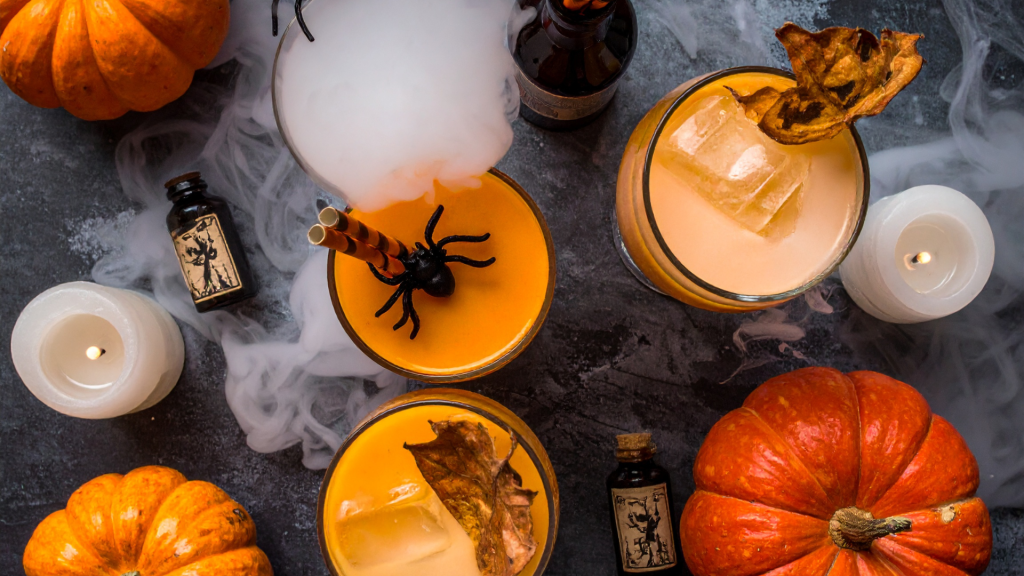
Spooky Sips: The Best Halloween Cocktails to Serve This Season
Looking for some Halloween cocktails inspiration? This holiday is the perfect reason to get creative with your drinks. Whether you’re hosting a costume party or relaxing at home with friends, themed cocktails make the night memorable. At Payless Liquors, we know a good Halloween cocktail is more than a drink. It’s part of the show.
This guide shares easy recipes, serving tips, and ideas that help you impress your guests. All ingredients are available at your nearest Payless Liquors in Indiana.
Why Halloween Cocktails Matter
Halloween cocktails are fun and functional. They bring color and atmosphere to your party while giving guests something unique to talk about.
-
They fit the spooky theme with dramatic colors and garnishes.
-
They make any event more photogenic.
-
They help you feature seasonal flavors like apple, pumpkin, and cinnamon.
-
They create a reason to stock up on premium spirits and mixers from local stores.
Top 5 Halloween Cocktails to Try
These cocktails balance creativity with simplicity. You can serve them at parties, bars, or small get-togethers.
1. Witch’s Brew Punch
A punch bowl always works for large crowds. Mix vodka or gin, lime juice, melon liqueur, and lemon-lime soda. Add a few drops of green food coloring or use Midori for that eerie glow. Float gummy worms or a bit of dry ice for fog.
Inspo:Mix That Drink
2. Vampire’s Kiss Martini
Use vodka, raspberry liqueur, and cranberry juice for a blood-red look. Rim the glass with red sugar or drizzle grenadine along the edge so it “bleeds.” This simple drink delivers bold flavor and presentation.
3. Black Magic Margarita
Give your margarita a Halloween twist with black salt and dark color. Combine tequila, triple sec, lime juice, and a small amount of activated charcoal or black food dye. The result is striking under dim lights.
4. Candy Corn Shot
Layer equal parts white crème de cacao, orange curaçao, and cream to mimic the classic Halloween candy. The color gradient creates instant party appeal. It’s sweet, nostalgic, and great for photos.
5. Nightmare on Bourbon Street
This batch cocktail keeps your bar moving. Mix bourbon, apple cider, lemon juice, cinnamon syrup, and a splash of soda water. Serve in a glass punch bowl with orange slices and cinnamon sticks floating on top.
Inspo: The Spruce Eats
Presentation Tips
A good Halloween cocktail looks as good as it tastes. Focus on visuals that match your party theme.
-
Add smoke or fog using dry ice (handle safely).
-
Use dark or colored glassware for effect.
-
Rim glasses with colored sugar or black salt.
-
Garnish with candy eyeballs, fake spiders, or gummy worms.
-
Use LED ice cubes to make drinks glow.
You don’t need to overcomplicate it. A few simple touches can make your drinks stand out in every photo.
Non-Alcoholic Options
Not everyone drinks alcohol. Keep the fun going with mocktails that match your theme.
Try a Pumpkin Punch with apple cider, orange juice, ginger ale, and pumpkin puree. Or serve a Bloody Shirley with grenadine, lemon-lime soda, and cherries. Serve both in the same Halloween glassware as your cocktails so everyone feels included.
Make Payless Liquors Your Halloween Headquarters
At Payless Liquors, you’ll find everything you need to stock your bar.
-
Check our Weekly Ad for discounts on vodka, whiskey, tequila, and mixers.
-
Find your nearest store on our Locations page.
We carry both everyday staples and specialty spirits perfect for Halloween cocktails. If you’re looking for a specific brand or size, ask our staff for help. We’re happy to make recommendations! Whatever you may need, you can find right here at Payless Liquors. Stop by today to stock up for your Halloween party.
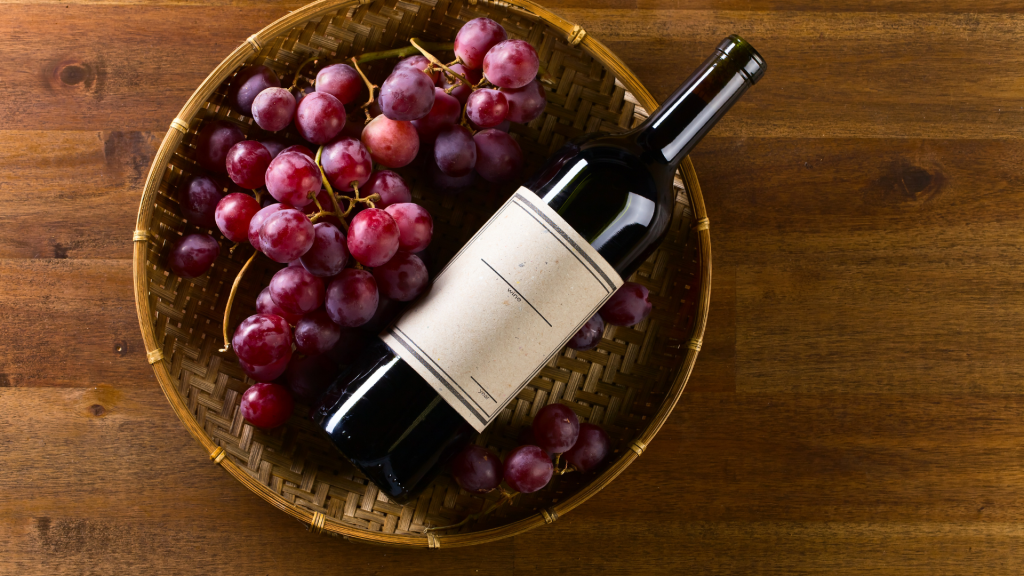
How to Read a Wine Label Like a Pro
If you’ve ever stood in front of a shelf full of wine bottles, staring at labels full of unfamiliar words, you’re not alone. Learning how to read a wine label gives you confidence. It helps you make better choices. It helps you pick wine that matches your taste and budget.
In this guide, you’ll learn to decode the most important elements on a wine label. You’ll see how wineries communicate region, grape, vintage, quality, and more. At the end, you’ll feel more confident when you browse your local store (like Payless Liquors) or recommend a bottle to a friend.
Why it matters to learn how to read a wine label
Wine labels are not just decoration. They carry essential clues about what’s inside the bottle:
-
You’ll learn about the grape varieties used, the region of origin, and the vintage year
-
You’ll see production claims (estate, reserve, organic)
-
You’ll know the alcohol content, volume, sulfite statements, and legal warnings
-
Understanding labels reduces guesswork and helps you avoid surprises
As noted by Wine Enthusiast, decoding label practices (especially Old World vs. New World) helps you interpret what the label implies about quality and style.
Front Label vs. Back Label: What each tells you
When you hold a bottle, the front label is your first view. It usually shows:
-
Producer or winery name
-
Grape (or varietal) or brand name
-
Region or appellation
-
Vintage (year)
-
Eye-catching design elements
The back label (or a side label) tends to carry supplemental but useful info:
-
Tasting notes or flavor hints
-
Food pairing suggestions
-
Bottler / importer / distributor information
-
Technical data (e.g. residual sugar, acidity)
-
Production claims (organic, biodynamic)
-
Legal / health warnings
-
Sulfite statement
Don’t skip reading the back label — sometimes it holds what matters most.
Key elements you’ll find on a wine label
Below are the main label components and what each reveals about the wine.
1. Producer / Winery Name
This is the name of the company or estate that made the wine. It’s usually in bold or prominent text. A respected producer often signals consistency and care.
Sometimes the producer is not obvious; the “brand name” might obscure who actually made or bottled the wine. In that case, look for small text that says “Produced by …” or “Bottled by …”
2. Wine Name / Brand / “Fanciful Name”
Many wines have a fanciful name (a name not tied to grape variety or region). This serves marketing. If you see a name like “Silver Crest” or “Sunset Ridge,” it might not tell you the grape. You’ll want to look elsewhere on the label for grape and origin clues.
3. Grape Variety (Varietal Labeling) or Appellation
In New World wines (U.S., Australia, etc.), labels often list the grape variety, e.g. “Cabernet Sauvignon,” “Chardonnay,” “Pinot Noir.” This tells you the dominant grape and gives you a sense of flavor.
In Old World wines (Europe), labels tend to emphasize appellation (region) over grape. The region’s rules (appellation laws) govern which grapes may be used, and so the region can imply grape. For example, a Bordeaux label might not list “Merlot” or “Cabernet Sauvignon,” but you expect those grapes.
If no grape is listed, use region + appellation knowledge to infer likely varieties.
4. Vintage (Year)
The vintage is the year the grapes were harvested. That year matters:
-
Good growing seasons produce better fruit, which often leads to better wine.
-
Some wines are meant to be consumed young; others improve with age.
-
Non-vintage (NV) means grapes from different years were blended. Sparkling wines often use NV to maintain style.
Be cautious: some labels might put the vintage on the back or in small type if their design is artistic.
5. Region / Appellation / Sub-region
This tells you where grapes were grown. It can be broad (e.g. “California”) or very specific (e.g. “Napa Valley, Rutherford”). The more specific the region (sub-AVAs, vineyard names), often the more the wine is expressing terroir (soil, climate, altitude).
For wines from Europe, appellation names often carry regulations about permitted grapes, yield, and aging. Labels like “AOC,” “DOCG,” or “IGT” carry legal implications about quality.
6. Alcohol by Volume (ABV)
The ABV must appear on U.S. wine labels. It shows strength. A higher ABV often suggests riper grapes, fuller body, sometimes bolder flavors. According to Food & Wine, if a wine says 12% vs 15%, expect noticeable difference.
7. Bottler / Importer / Distributor Information
This tells you who bottled or imported the wine. Especially for imported wines, this clarifies how it reached your market.
Often the label will read something like “Bottled by X Winery in …” or “Imported by …, City, State.”
8. Sulfite Statement & Legal Warnings
In the U.S., wines must include a “Contains sulfites” statement if sulfur dioxide is used. The label also includes a government health warning about alcohol consumption.
9. Technical or Supplemental Claims
These are optional but useful:
-
“Estate Bottled”: The winery owns the vineyard and controls the winemaking from vine to bottle
-
“Reserve,” “Select,” “Private Label”: These words are marketing terms in many places (not always legally defined)
-
Vineyard designation: Indicates fruit from a specific vineyard
-
Organic / biodynamic certification, sustainable practices
-
Residual sugar, acidity, or residual listings
-
Awards, scores, ratings
Be wary: some of these claims are significant, others are mostly branding.
How to read a wine label like a pro — step by step
Here’s how to parse a label in practice.
-
Start with the producer name
-
Look for a grape variety or appellation
-
Check the vintage year
-
Read region/appellation / sub-region
-
Note ABV (alcohol level)
-
Flip to the back label for tasting notes, importer, bottling, claims
-
Watch for marketing terms and certifications
-
Use your knowledge (or a wine app) to compare labels you understand to new ones
Over time, you will build a mental library of producers, regions, and styles you like. Then reading labels becomes fast and intuitive.
Examples & tips to sharpen your label reading
-
If a U.S. wine label says “California Chardonnay” (broad region), it’s likely entry-level. If it says “Napa Valley Chardonnay,” it’s more specific.
-
If a French wine label lists only the region (e.g. “Bordeaux”), with no grape variety, the grapes are implied by Bordeaux rules (e.g. Cabernet, Merlot blends).
-
Wines labeled “Reserve” in the U.S. or elsewhere may or may not mean extra aging or quality — treat it as a hint, not a guarantee.
-
Watch ABV: If you prefer lighter wines, look for labels around 12–13%.
-
If you see an organic or biodynamic logo, that may reflect the winery’s philosophy (but taste matters more).
-
Don’t get distracted by fancy designs. The information (not the artwork) is what counts.
Common pitfalls & label red flags
-
Labels that lack essential info (producer, region, ABV) might indicate lower transparency.
-
Overuse of marketing words (Reserve, Grand, Select) without other clues should be taken with skepticism.
-
Extremely high ABV (over, say, 15%) might mean jammy, overripe, or heavy wine.
-
Fancy names with no region or grape clues can make it risky unless you know the brand.
-
For imported bottles, check for the importer name or local bottling — it gives a clue about supply chain quality.
Understanding how to read a wine label helps you make smarter buying decisions. Each part of the label tells a story — where the grapes were grown, how the wine was made, and what you can expect in your glass. Once you know what to look for, shopping for wine becomes easier and more enjoyable.
At Payless Liquors, you’ll find a wide range of wines from trusted producers around the world. Visit one of our Indiana locations and put your new label knowledge to use. Ask our team for recommendations or explore something new with confidence.
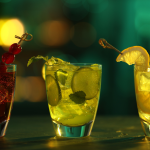
Discover 15 Unique Rum Cocktails for Your Next Party

Discover Perfect Wine Pairings for Thanksgiving Dinner

Must Wear Cocktail Inspired Halloween Costumes
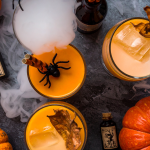
Spooky Sips: The Best Halloween Cocktails to Serve This Season

How to Read a Wine Label Like a Pro
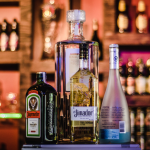
Indiana Trivia: Strange Laws and Surprising History of Alcohol in the Hoosier State

Apple vs. Pumpkin: The Fall Flavors Battle

Tailgate Like a Pro: Top Drinks for Indiana Football Weekends

Oktoberfest at Home: Indiana Beers & Pairings You Need to Try

